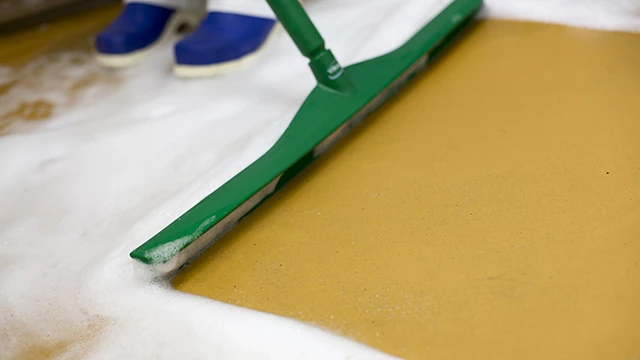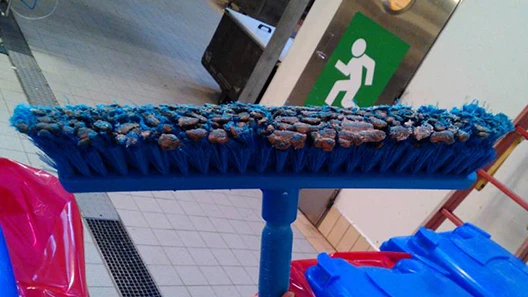Foreign body contamination in food can be a serious safety or quality issue, and sometimes both. When it happens, it can lead to significant financial losses and damage to a business's reputation. To address this challenge, Vikan developed UST brushware. This blog explores the research and testing behind UST technology, focusing on how the bristle fixation strength was evaluated across different types of brushes used in the food industry. We also explain how these findings have been applied to reduce the risk of bristle loss and improve hygiene standards. We tested the force required to pull a bristle from various types of food-grade brushes, including: The results showed that the force needed to remove a bristle varied significantly for traditional brushes due to factors like bristle thickness, position in the bundle, and whether it was the first or subsequent bristle pulled. For example, the first bristle often required more force because it was tightly held by the staple. However, once one bristle was removed, the remaining ones became looser, requiring less force and increasing the risk of further bristle loss. Unlike traditional brushes, UST brushware uses a fully molded construction that eliminates the need for staples and resin. This ensures each bristle is individually fixed, providing consistent strength regardless of the position in the bundle or previous removals. This design significantly reduces bristle loss and minimizes the risk of foreign body contamination in food products. Bristle thickness still affects the breaking point of all brush types, with thinner bristles requiring less force to break. We measured the average force needed to pull bristles from a UST brush and a standard D&S brush. Based on 60 pulls per brush type, the average fixation strength was 5.34 N for UST and 3.53 N for D&S. This means it takes about 52% more force to dislodge a UST bristle than a D&S one. The percentage difference between 5.34 and 3.53 was calculated as follows: This shows that, on average, it takes 51.3% more force to remove a UST bristle compared to a standard one. We also analyzed the variability in fixation strength using Standard Deviation. A smaller deviation indicates more consistent results. For UST, the average fixation strength was 5.34 N with a Standard Deviation of 0.57. This means that 68% of the results fell between 4.77 N and 5.91 N. In contrast, for D&S, the average was 3.53 N with a Standard Deviation of 1.18, showing much greater variation. Percentage Variance was calculated to compare the consistency between UST and D&S brushes: This indicates that UST offers over 3 times better bristle fixation consistency than standard brushes. If you want to learn more about Vikan’s UST technology and how it can help protect your business, visit our website us/services/ultra-safe-technology. Choosing the right Vikan squeegee for your needs helps maintain high hygiene standards and improves employee satisfaction. Discover the nine essential elements that must be included in a Declaration of Compliance. Find out how to prevent this common issue with Vikan's expert advice. Family outdoor pizza oven,outdoor tables metal,Portable outdoor BBQ grill table GFTOP , https://www.ovenchief.com

Background InformationOur Research



Determining Average Bristle Fixation Strength
Evaluating Bristle Fixation Variability
Summary
Recent Blog Posts

Which squeegee do I choose?

What should you look for in a Declaration of Compliance?

Do your brushes clog?
Understanding bristle fixation in food industry brushware
See all posts
Lotte Jensen - Marketing Project Manager
Stine Lønnerup Bislev - Previous Hygiene and Compliance Manager at Vikan
Lotte Jensen - Marketing Project Manager

